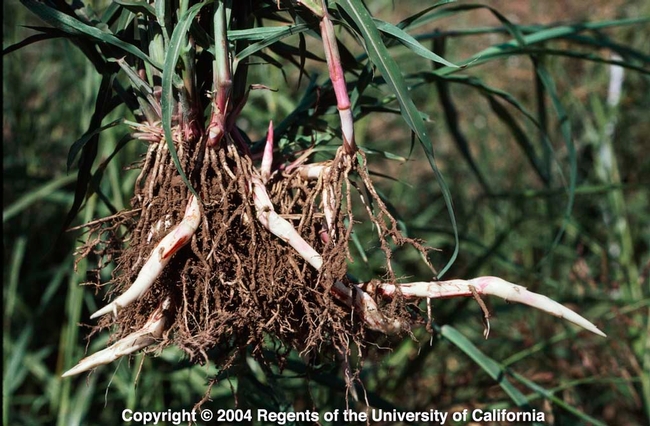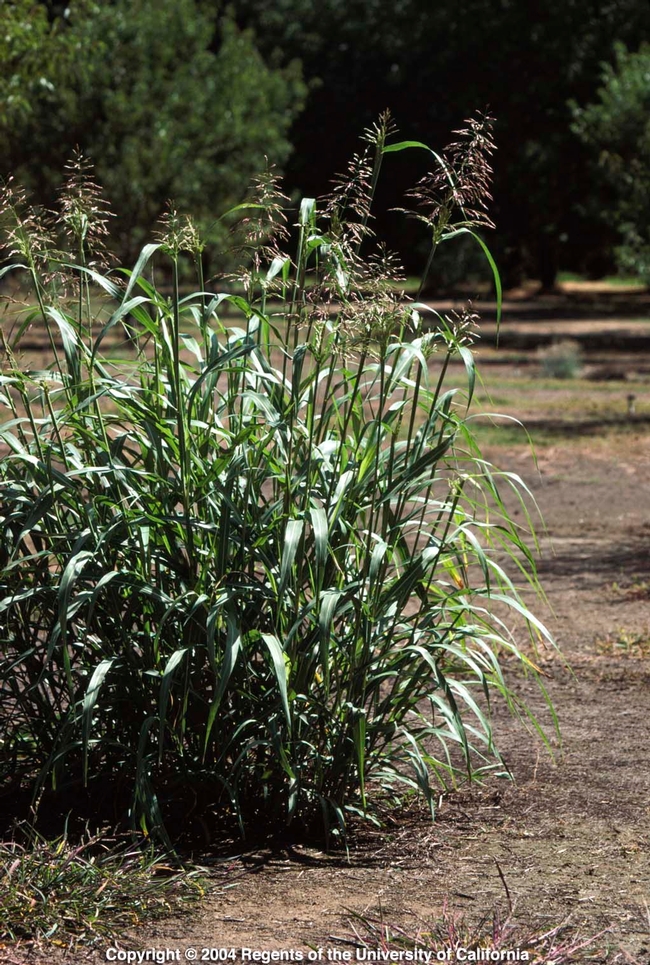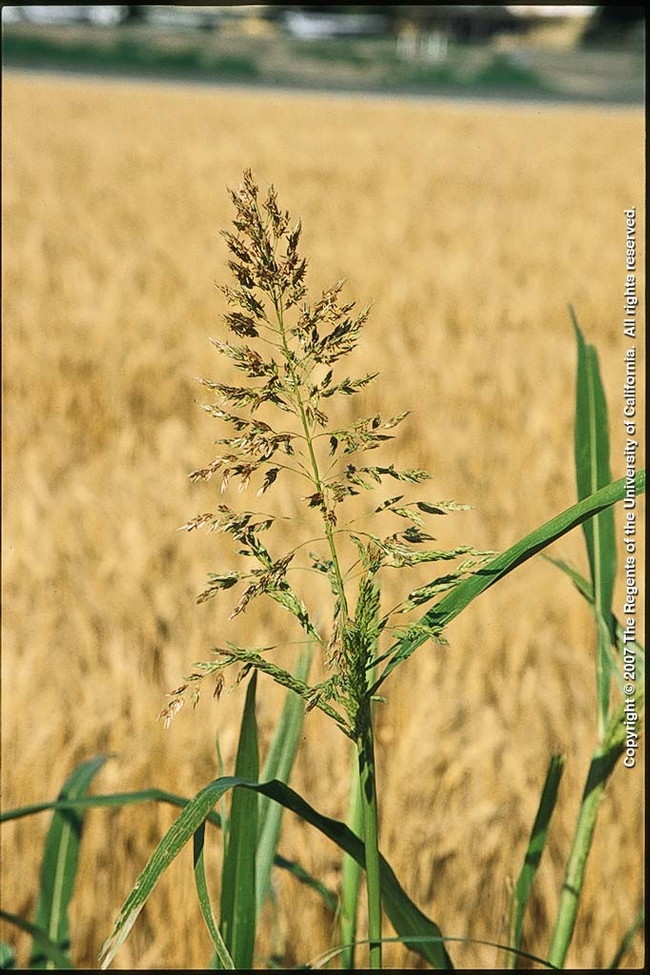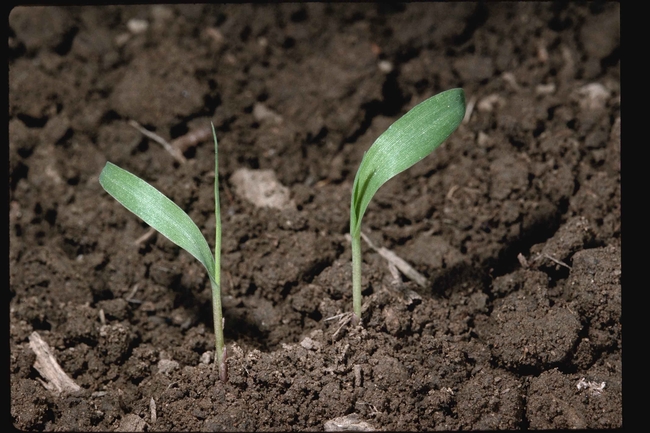Johnsongrass (Sorghum halepense) is a common sight throughout our hot dry Butte County summers. Johnsongrass rhizome, UC ANR
This non-native weed arrived in Texas in the 1830s and by the late 19th century was recognized as a problem in the North Valley and throughout California's agricultural fields.
Johnsongrass mature plant, UC ANR
Johnsongrass flowering, UC ANR
Johnsongrass seedling, UC ANR
The Butte County UC Master Gardeners are part of the University of California Cooperative Extension (UCCE) system, serving our community in a variety of ways, including 4H, farm advisors, and nutrition and physical activity programs. Our mission is to enhance local quality of life by bringing practical, scientifically-based knowledge directly to our community. For more information on UCCE Butte County Master Gardeners and their upcoming events, and for help with gardening in our area, visit https://ucanr.edu/sites/bcmg/. If you have a gardening question or problem, call our Hotline at (530) 538-7201 or email mgbutte@ucanr.edu.



